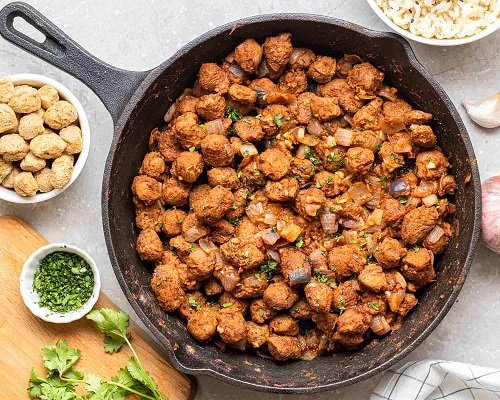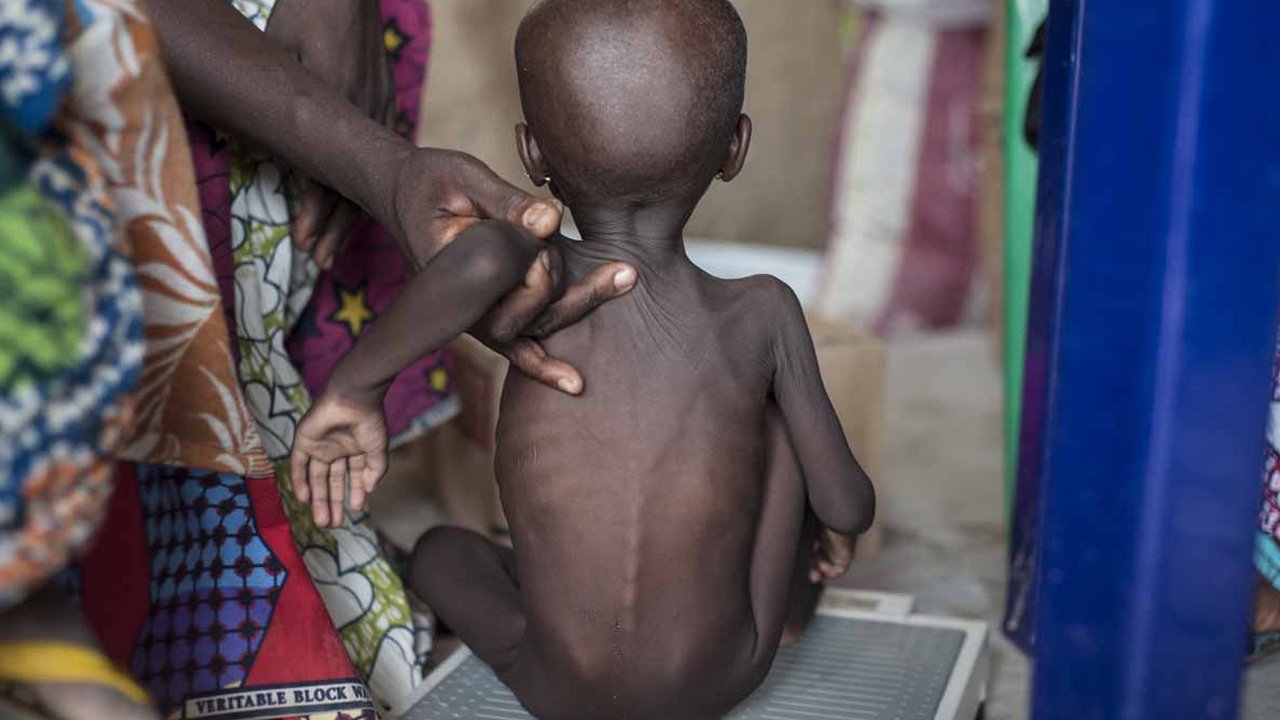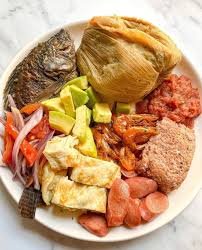Nutrition
Health benefits of Soya chunks

• soya chunks
Acts as a meat substitute
Vegetarians and those who suffer from protein deficiency can incorporate soya chunks into their diet. They help to make up for the recommended value of protein without tampering with one’s traditions.
Each 100 gram serving has 345 calories with 52 grams of protein. It indeed qualifies as an alternative to meat, yet provides extra protein as compared to chicken and lamb.
Promotes heart health
Soya chunks are rich in protein, omega3 fatty acids, fibre and low in saturated fat.
Also, a 2015 study published in the Molecules journal talks about the benefits of soya and its ability to lower the levels of bad cholesterol in the body. Thus, in addition, good cholesterol prevents several heart ailments, making soya chunks a heart-friendly food.
Aids in weight loss
This unique plant based protein is known to reduce body weight and fat mass. The fibre content in soya chunks keeps hunger at bay. In addition, they can keep you full for long hours.
Soya chunks have a greater thermogenic effect (energy needed above the basal metabolic rate to digest, absorb and metabolize food) than carbohydrates. Thus, when taken in correct proportions, soya chunks can aid in your weight loss journey.
It helps to reduce menopausal symptoms
Many women going through the menopause phase have hot flashes, night sweats, trouble sleeping, vaginal dryness, and mood swings. Dozens of small studies have looked at the effects of soy on these symptoms, especially hot flashes.
Soy chucks are rich in isoflavones, it’s a type of phytoestrogen. These are believed to work like estrogen and thus ease out symptoms of menopause.
Regulates hormonal imbalance in women
Due to phytoestrogens in soya chunks, women with irregular hormonal activity can eat soya chunks regularly.
In particular, postmenopausal women and those suffering from PCOS benefit the most. It imitates estrogen and regulates the menstrual cycle in women.
Improves digestive health
Both animal and human studies have shown that consumption of soy foods can increase the levels of bifidobacteria and lactobacilli in the gut, thus enhancing gut health.
Contains anti-inflammatory properties
Consumption of soy foods has been shown to have beneficial effects on multiple aspects of human health, including reduced risk of inflammation-related diseases, such as cardiovascular disease, diabetes, and certain cancers.
Regulates blood sugar levels
Soybean can be extremely beneficial for diabetics and should definitely be added to their diet.
A study from the University of Massachusetts Amherst found that soybean is rich in bioactive compounds known as isoflavones. These compounds are responsible for lowering the risk of diabetes and heart diseases. More importantly, the study noted that consuming soy-based foods can lead to a decrease in blood sugar levels and even improve tolerance of glucose in those who have been diagnosed with diabetes.
Source: https://www.healthifyme.com/
Nutrition
Nourishing Ghana Starts with Us: The role of citizens

The success of Ghana’s fight against malnutrition does not rest solely in the hands of the government or donors. It depends on us, the citizens. Nutrition is not just a technical issue. It is a societal one, and every Ghanaian has a role to play in ensuring that no child goes hungry, no mother is left unsupported, and no community is forgotten.
As citizens, we must shift how we see nutrition: not as a private family concern, but as a collective national responsibility. Here’s how we can act:
1. Demand accountability
Every citizen has the right and responsibility to ask how public funds are being used to support nutrition. Are local clinics stocked with supplements? Are school feeding programmes working in your district? Are maternal health services adequately funded? Ask questions. Engage assembly members. Attend town hall meetings. Make your voice count.
2. Speak up, Speak out
Silence has a cost. When we fail to speak out against malnutrition, we normalise it. Use your platform, whether it is WhatsApp group, a radio show, a church gathering, or social media, to raise awareness. Normalise conversations about child feeding, food quality, and maternal health. Silence keeps systems broken. Voices drive change.
3. Support local solutions
Support or join community nutrition initiatives. Volunteer. Share what you know. Help spread accurate information about breastfeeding, healthy diets, and hygiene. If you are a farmer, teacher, trader, or youth leader, your knowledge and effort can make a difference. Change starts in our homes and neighbourhoods.
4. Protect the first 1,000 days
Whether you are a father, grandmother, neighbor, or employer, support pregnant women and caregivers during this crucial period. Encourage antenatal care. Help with child care. Prioritise nutritious foods. The first 1,000 days of a child’s life lay the foundation for everything that follows.
When citizens care, ask questions, take action, and show solidarity, we create the conditions for lasting change. Malnutrition is not inevitable. It is a symptom of neglect, and neglect ends when citizens choose to act.
Feature article by Women, Media and Change under its Nourish Ghana: Advocating for Increased Leadership to Combat Malnutrition Project
Nutrition
Ga Kenkey

Ga kenkey, a staple in Ghanaian cuisine, is prepared with fermenting corn dough, then cooking a portion of it to create ‘aflata’ or ‘banku’. It is a popular food in the southern part of Ghana.
Ingredients:
-8 cups of dried corn
-Dried corn leaves (for wrapping)
-2 tablespoonful of stew
Preparation
-Soak corn in water overnight
-Grind corn into a powder form
-Mix the ground corn with water (dough)
-Mix part of the dough with water and put it on fire to cook
-Take the pot off the fire and mix in the remaining dough .
– When ready shape mixture into balls and set every prepared ball on a corn leaf.
– Cover each ball by wrapping the corn leaf around it
– Put water on fire. Add wrapped kenkey to boil for 45 minutes.
– When ready take them out carefully and serve them along with shito, ground pepper and fish.






